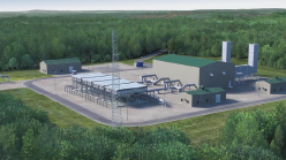Over the next 20 years, US natural gas demand will grow by 50%. According to a recent study, pipeline companies will need to install almost 50,000 miles of pipe to meet the growing market for natural gas in the US from 2001 to 2015. To meet this growing demand, there needs to be an increase in natural gas supply and infrastructure.
The time required for the gas pipeline certificate application review and approval process varies based on the size and type of the project. The process, in the extreme, can take more than 24 months from the time a company submits an application until the Federal Energy Regulatory Commission (FERC) renders their decision as to whether or not they will approve a certificate for a project. For applicants and their investors, a minimal review time is desired since lengthy reviews are costly and may suggest uncertainty.
In 2002, the FERC Office of Energy Projects established a pre-filing process by which applicants would become engaged with stakeholders, including state, local, and other federal agencies, prior to filing an application for a Natural Gas Act 7(c) certificate. FERC reasons that the sooner stakeholders become involved, the earlier potential issues can be identified and the cost of addressing issues will be less.
This INGAA Foundation report focuses on the pipeline industry’s responsibilities for the development of the project filing documents. The purpose of this study is to evaluate certain risks and benefits of the current pre-filing process and suggest improvements to make it more attractive for pipeline applicants, the FERC and other stakeholders. To make the pre-filing process attractive, the authors have attempted to identify a series of progress indicators (“milestones”) that are meaningful to project sponsors, their financiers, regulators, and other stakeholders.
Benefits of the Milestones Approach: The pre-filing process requires comparable clear and meaningful milestones – meaningful to stakeholders – in order to be successful. Without pre-filing milestones to serve as measures of success or early warning signals, it will be difficult to realize the benefits of the pre-filing process, and the process could be perceived as high-risk. Any perceived increased risks to the applicant will deter other pipeline companies from opting into the new pre-filing process.
No compromise on requirements: The collaborative and parallel working together of all stakeholders using this Milestones approach can compress the overall process and produce significant benefits without compromising any of the existing certificate process requirements.





